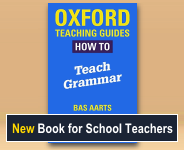Antonymy 2 (Stein)
Activity 1
Explain to learners that they will continue to look at antonyms, but this time by looking at adjectives. Make sure they understand these key terms by discussing the three example pairs.
In the next slide, show the learners the five sentences. Each sentence has a gap which can be filled with an adjective or its antonym. Have learners copy the sentences and fill the gap with two possibilities. Reveal the answers and accept any other reasonable options.
Activity 2
Remind learners that they have already seen how prefixes can be used to form antonyms. Use the two example sentences to explain how the same antonym can be formed in different ways.
Show the learners the four sentences in the next slide. Each sentence has an adjective that can be replaced by an antonym combined with a negative prefix. Ask learners to copy the sentences and think of a word they could use to replace each adjective. Use the 'Adjectives' button to reveal some possible solutions.
Feedback the answers and show the four possible solutions in the next slide.
Activity 3
Move on to the next slide. Explain these patterns that can help learners with the spelling of words with different origins. Have them copy down the rules.
Ask learners to copy down the list of 12 adjectives. For each one, they must add the appropriate prefix to form the antonym, and then write a sentence for both the original and antonym word. Once they've finished, encourage them to share their answers in pairs or small groups and feedback the best answers to the whole class.
This lesson is adapted (with permission) from Words and Meanings: A Systematic Guide for the Teaching of English Vocabulary, by Gabriele Stein.
Welcome!

Englicious is totally free for everyone to use!
But in exchange, we ask that you register for an account on our site.
If you’ve already registered, you can log in straight away.
Since this is your first visit today, you can see this page by clicking the button below.
- Printer-friendly version
- Log in to view or leave comments

